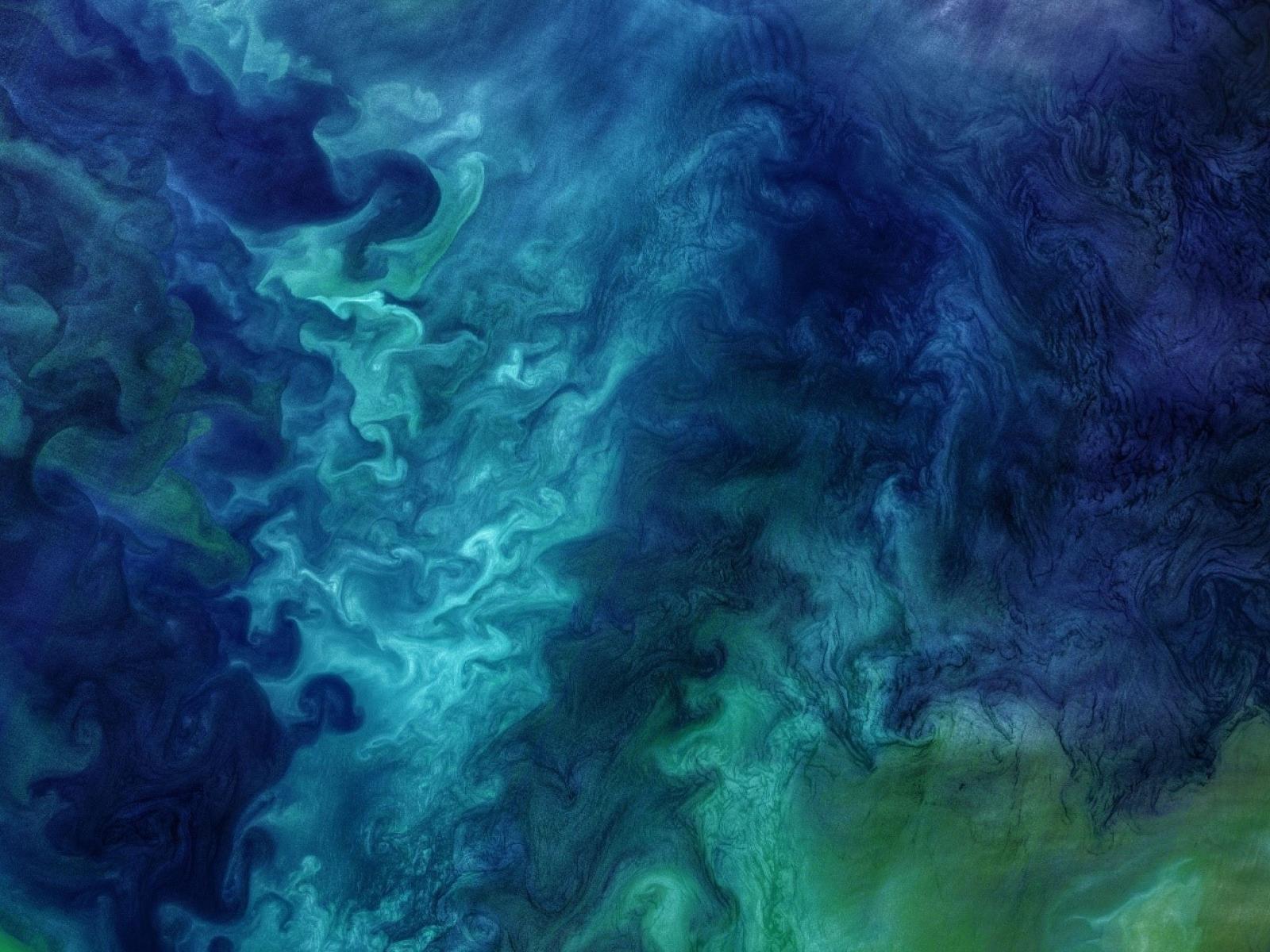Ocean Critters Brighten Clouds and Help Cool the Planet
Marine microorganisms may enhance cloud droplet formation, leading to brighter clouds that reflect more sunlight

Simulations show that small oceanic creatures can affect clouds in portions of the Southern Hemisphere.
The Science
Clouds in the atmosphere are made of millions of tiny droplets. These droplets form when water vapor condenses onto tiny particles made of different materials, including dust, pollution, or sea spray. In some parts of the planet, carbon-based, or organic, matter produced by marine microorganisms contributes to the ocean spray particles that enter the atmosphere. Researchers simulated the effect of this sea spray organic matter. They showed that it can help brighten clouds over the remote oceans in the Southern Hemisphere, causing them to reflect more sunlight than they would otherwise.
The Impact
By simulating the impact of marine phytoplankton, self-feeding marine microorganisms, on particles in a global climate model, researchers were able to determine where and when current models predict that phytoplankton organic matter affects clouds and climate. According to the model simulations, the impact of phytoplankton on clouds is small in most parts of the Earth. However, it can boost cloud brightness over the remote Southern Ocean, a region dominated by large storm clouds that plays an important role in Earth’s climate.
Summary
Previous studies showed that seasonal variations in the organic matter present in sea spray aerosol correlate with seasonal changes in ocean biological activity. To estimate the climate impact of this sea spray organic matter, researchers incorporated it into a climate model. In the model, winds in ocean regions cause sea spray to be emitted to the atmosphere. Organic matter is added to the sea spray based on the simulated seasonal and geographic distributions of different classes of freshly produced and aged organic matter. The model assumes that freshly produced organic matter, from waste products and fragments of dying phytoplankton, is “stickier” and more easily included in sea spray particles.
By simulating how these processes affect sea spray production and cloud droplet formation, researchers were able to estimate the magnitude of their effect on the Earth’s radiative budget. The results show that simulated cloud impacts were statistically insignificant over most of the Earth. The exception to this was over the Southern Ocean, a major player in Earth’s climate. Clouds simulated in this region were slightly brighter because of the effects of ocean biology. This finding agrees with previous evidence from satellite observations showing that variations in Southern Ocean cloud brightness could be partly explained by seasonal and geographic variability in sea spray organic matter.
This research used high-performance computing resources from the National Energy Research Scientific Computing Center.
PNNL Contact
Susannah Burrows, Pacific Northwest National Laboratory, susannah.burrows@pnnl.gov
L. Ruby Leung, Pacific Northwest National Laboratory, ruby.leung@pnnl.gov
Funding
This research has been supported by the Office of Science of the Department of Energy (DOE) as part of the Earth System Model Development program area. This research used high-performance computing resources from the National Energy Research Scientific Computing Center, a DOE Office of Science User Facility.
Published: September 30, 2022
Burrows, S. M., Easter, R. C., Liu, X., Ma, P.-L., et al. 2022. “OCEANFILMS (Organic Compounds from Ecosystems to Aerosols: Natural Films and Interfaces via Langmuir Molecular Surfactants) sea spray organic aerosol emissions – implementation in a global climate model and impacts on clouds.” Atmospheric Chemistry and Physics, 22, 5223–5251. [DOI: 10.5194/acp-22-5223-2022].